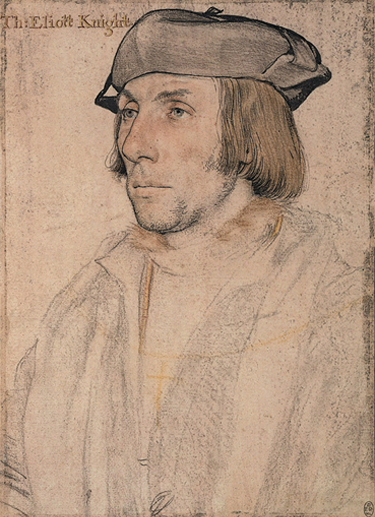Pressing a face to the window of history: Andrew Graham-Dixon on Hans Holbein's portraits of the court of Henry VIII, at the NPG
Hans Holbein the Younger drew Sir Thomas Elyot one day in 1532. The sitter gazed off to the artist's left, made sure he kept still and staved off boredom with a daydream. Four and a half centuries later, Elyot survives death in Holbein's disconcertingly vivid image of him. He is faintly flushed, his cheeks dark with stubble and his greenish blue eyes thoughtful. His face is precisely observed, down to immature sideburns and a few strands of hair that have truantly separated themselves from the lank combed mass of the rest. Holbein's Tudor knight is almost palpable but he remains inscrutable.
Elyot, a man of destiny with a five o'clock shadow, may be contemplating his recent and momentous impact on the course of English history. When Holbein drew him he was recently back from Spain, where he had been engaged in an abortive act of diplomacy, attempting to enlist Charles V's support for Henry VIII's divorce from Catherine of Aragon. Henry's ensuing break from Rome, the dissolution of the monasteries and the iconoclastic ransacking of church and cathedral - here is a man at the epicentre of one of the most profound upheavals in the history of this nation, one that would alter its cultural landscape forever. Elyot may be reflecting on all this. Or he may just be thinking about his lunch.
Holbein's drawings of the court of Henry VIII, temporarily on loan from the Royal Collection to the National Portrait Gallery, are both extraordinary and tantalising in their immediacy. To inspect them close to, as the dim lighting of the exhibition and the quiet virtuosity of Holbein's realism demands, is to press your face up...


